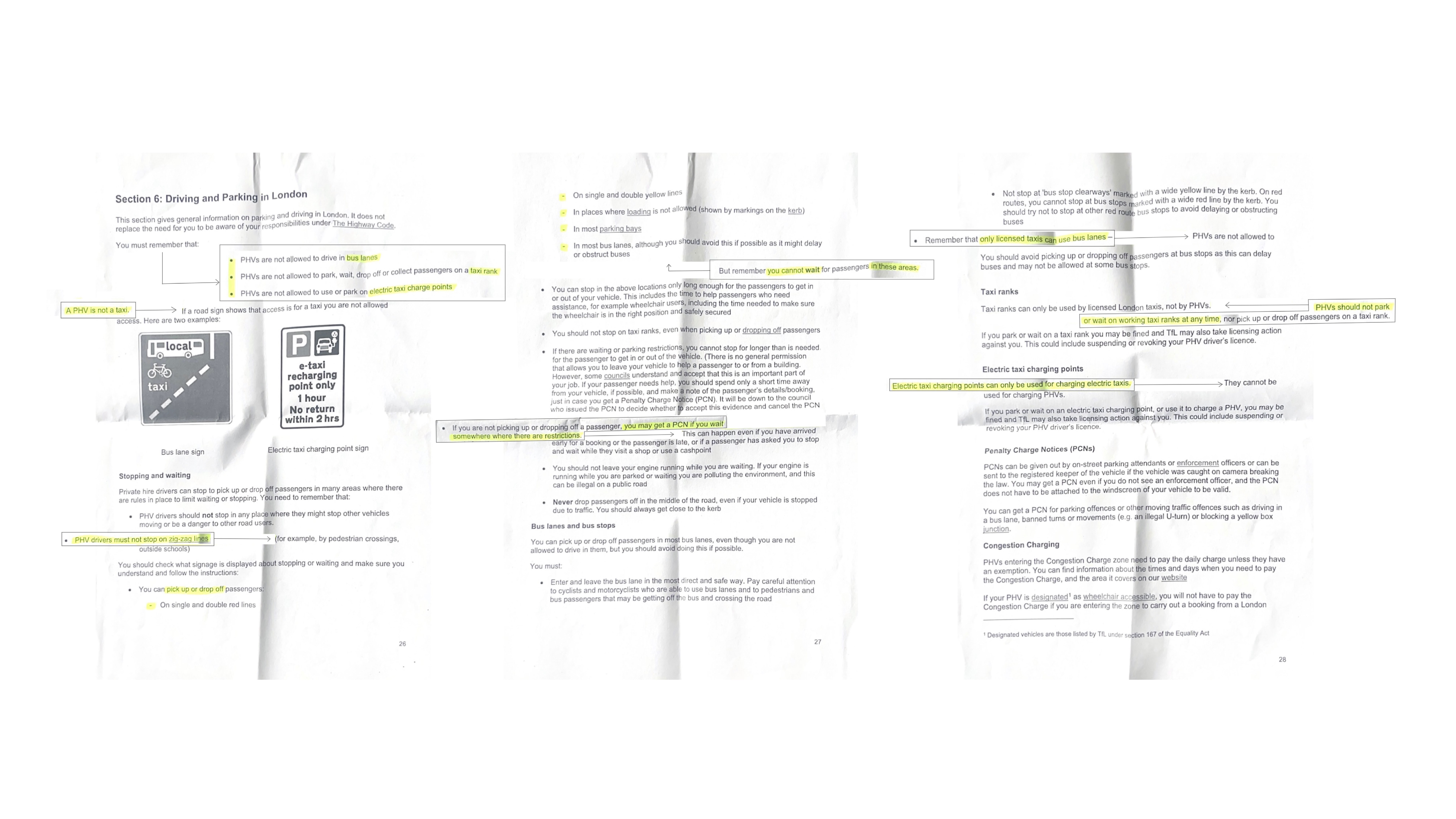| Aiala Samula Lopez |
| From the back seat: Addressing spatial inequities for Private Hire Vehicle Drivers through the re-imagination of London’s urban infrastructure |
| This piece is an exploration of the distinctions in the spatiality of employment conditions regarding PHVs versus taxis in London and the systemic inequalities that emerge from this analysis. The writing culminates in a cognisance of what could constitute a future ‘beneficial’ architectural model/intervention to begin reducing these inequalities. Essentially functioning as an inquiry into the degree of spatial justice afforded to these workers; workers often sat in the ‘back seat’ of conversations surrounding the domains of transport infrastructure, precarity and equity. |
| Architecture’s role as a rooting infrastructure of social organisation is a privilege not easily afforded to Private Hire Vehicle (PHV) drivers in London, as their rights within the city currently face contestation. Concerns surrounding ethical practice due to a lack of government/company accountability, warrants conversation around a justice-based argument for freedom of mobility regarding consumer and service worker. Scholar Mimi Sheller emphasises the uneven distribution of mobility systems like the transport sector and urban design, suggesting they are rife with inequality due to the hierarchies of power that forge them. Hence, this article functions as an inquiry into the degree of spatial justice afforded to these workers; workers often sat in the ‘back seat’ of conversations surrounding the domains of transport infrastructure, precarity and equity. By analysing distinctions in the spatiality of employment conditions regarding PHVs versus taxis, systemic inequalities begin to emerge. Although, the landscape is more complicated, for the purposes of this paper, it has been summarised to more succinctly comment on how infrastructural hierarchies relate to driver wellbeing. Uber’s operational model will be used as a case study, to provide point of reference for the treatment of drivers. Interviews with an immediate family member working as an Uber driver, will serve as supporting evidence; supplemented by opinions of other drivers sourced from digital forums. This will culminate in a cognisance of what could constitute a future ‘beneficial’ architectural model/intervention to begin reducing these inequalities. Without an infrastructure of support, people are often left to rely on themselves. In tandem with AbdouMaliq Simone’s theory how do we go about suggesting infrastructure for people that are already an infrastructure? |





1. Comparative timeline of the evolution of buses and taxis/PHVs in London. 2. Excerpt from Sambu’s PHV Driver handbook. 3. TfL’s yearly income from phv/taxi sector broken down. 4. Sambu in his car. 5. Potential site of existing gathering in Tottenham [N15 4LU] for the deployment of the proposed scheme. The site is already used by drivers as an informal rest stop. |